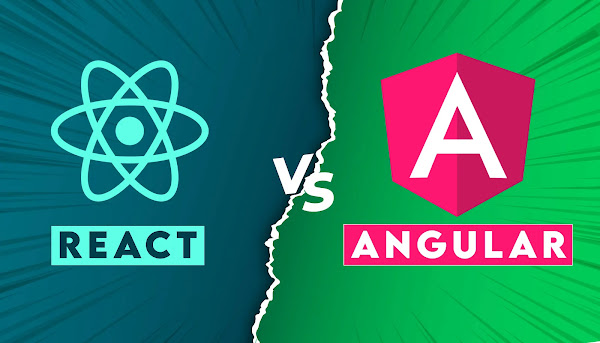React vs Angular: A Comprehensive Comparison
When it comes to choosing a front-end JavaScript framework for web development, two of the most popular choices are React and Angular. Both frameworks offer a wide range of features and capabilities, and both have their pros and cons. In this article, we'll take a detailed look at React and Angular, comparing and contrasting their features, capabilities, and performance, to help you make an informed decision about which one is right for your next project.
React: An Overview
React is a JavaScript library for building user interfaces. It was developed and is maintained by Facebook, and was first released in 2013. React is often referred to as just a view library, but it's actually more of a complete framework that offers a wide range of features for building dynamic and interactive web applications.
One of the key features of React is its component-based architecture, which allows developers to create reusable components that can be used across an application. Components are the building blocks of React applications, and they are defined using JavaScript functions or classes. React also offers a virtual DOM (Document Object Model) that helps to improve performance by only updating parts of the UI that have changed, rather than the entire page.
Angular: An Overview
Angular, on the other hand, is a full-fledged front-end framework developed and maintained by Google. It was first released in 2010, and since then, it has become one of the most popular front-end frameworks in the world.
Angular is a complete framework that offers everything you need to build complex, dynamic web applications, including two-way data binding, modular architecture, and an extensive set of built-in directives and services. Angular also uses a component-based architecture, but components are defined using TypeScript classes, rather than JavaScript functions.
React vs Angular: Key Differences
- Performance
- Learning Curve
- Community Support
- Flexibility
React has a lighter weight and smaller size compared to Angular, which can result in improved performance, especially in large applications. React's virtual DOM also makes it faster when it comes to updates, since it only updates the parts of the UI that have changed.
Angular, on the other hand, is often criticized for its performance, especially in large applications. However, the latest version of Angular (Angular 11) has improved performance significantly, and it's now on par with React in terms of performance.
React is often considered easier to learn than Angular, since it's just a view library, and doesn't require you to learn as much as Angular. React's component-based architecture is also easier to understand and work with compared to Angular's more complex architecture.
Angular, on the other hand, has a steeper learning curve, since it's a full-fledged framework that offers a lot more features and capabilities than React. Angular also requires you to learn TypeScript, which can be a challenge for some developers.
React has a large and active community, which means there are plenty of resources available for learning and getting help. React is also used by many large companies, including Facebook, Netflix, and Airbnb, which adds to its popularity and credibility.
Angular also has a large and active community, but it's not as widely used as React, which means there may be fewer resources available for learning and getting help. However, Angular is developed and maintained by Google, which adds to its credibility and reliability.
React is very flexible, and can be used with a wide range of other libraries and tools, which makes it easy to integrate into existing projects and workflows. React is also easy
Popular Applications build using React and Angular
Popular Web Applications Built with React
- Facebook: The most well-known example of a web application built with React is Facebook itself. Facebook uses React to build its user interface, and it's been instrumental in popularizing React as a front-end framework.
- Netflix: Netflix uses React to build its user interface, which provides a smooth and seamless experience for users. React's ability to handle dynamic and interactive user interfaces has made it a popular choice for video streaming platforms like Netflix.
- Airbnb: Airbnb uses React to build its user interface, and it's been instrumental in making the Airbnb platform more user-friendly and easy to use. React's component-based architecture has also made it easier for Airbnb to maintain and update its platform.
- Dropbox: Dropbox uses React to build its user interface, and it's been instrumental in improving the user experience for Dropbox users. React's ability to handle dynamic and interactive user interfaces has made it a popular choice for file storage platforms like Dropbox.
Popular Web Applications Built with Angular
- Google: Google uses Angular to build many of its web applications, including Google AdWords, Google Analytics, and Google Cloud Platform. Angular's extensive feature set and capabilities make it a popular choice for large companies like Google.
- Microsoft: Microsoft uses Angular to build many of its web applications, including Microsoft Teams and Microsoft Office. Angular's ability to handle complex and dynamic user interfaces makes it a popular choice for enterprise-level web applications.
- Upwork: Upwork uses Angular to build its user interface, and it's been instrumental in making the Upwork platform more user-friendly and easy to use. Angular's two-way data binding and modular architecture have also made it easier for Upwork to maintain and update its platform.
- PayPal: PayPal uses Angular to build its user interface, and it's been instrumental in improving the user experience for PayPal users. Angular's ability to handle complex and dynamic user interfaces makes it a popular choice for payment platforms like PayPal.

